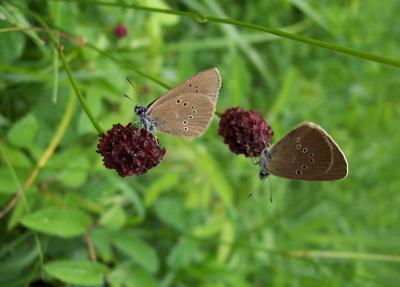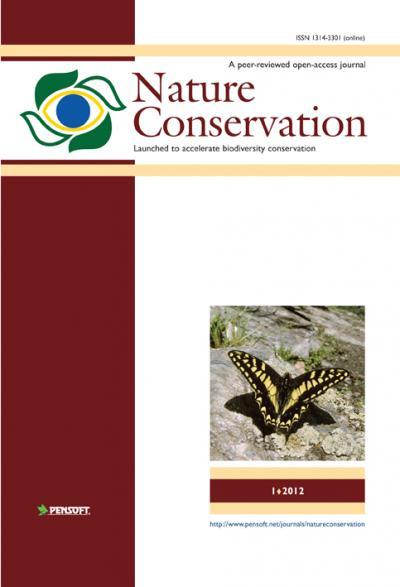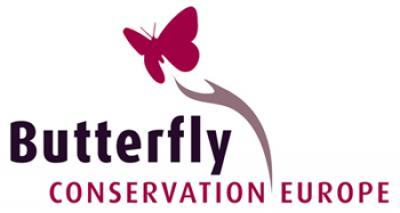The report entitled "Dos and don'ts for butterflies of the Habitats Directive of the European Union" was published in the form of an "Applied Conservation" paper in the newly launched open-access journal Nature Conservation (press release on the journal launch). It includes detailed accounts of each species, their habitat requirements and food-plants, as well as a list of dos and don'ts in the management of their habitats.
European butterflies are under huge threat and almost 10% are now threatened with extinction. The European grassland indicator shows that the abundance of 17 characteristic butterflies has declined by over 70% in the last 15 years.

Phengaris nausithous (Dusky Large Blue): this rapidly declining butterfly has a remarkable life cycle which involves living underground in ants nests for most of the year. It breeds in wet meadows where its initial caterpillar food-plant, Sanguisorba officinalis (Great Burnet) is abundant. After a short period of feeding in the flower buds the caterpillars are carried underground to live the rest of their lives in the nests of red ants Myrmica rubra. Meadows need to be cut every 1-3 years, or lightly grazed, leaving some patches of taller vegetation which supports the ants nests. Intensive cutting or heavy grazing can eliminate populations.
(Photo Credit: Josef Settele)
The main reasons for the declines are habitat loss and incorrect management. Many habitats are now either abandoned from agriculture, allowing them to become overgrown with scrub, while others are too intensively managed. The new publication is thus a pivotal step to get remaining habitats better managed.
Butterflies are sensitive indicators of the environment and populations respond very quickly to habitat change.
Management for butterflies will help ensure the survival of a wide range of other insects, which form the bedrock of European biodiversity.
The guidelines will help ensure that European habitats are managed in a sustainable way that helps the survival of humans as well as wildlife.
The lead author, Chris van Swaay of Dutch Butterfly Conservation said "Managing habitats in the correct way is the single most important issue affecting the survival of European butterflies. This is the first time that practical information has been brought together to address the issue. We hope the advice will be taken up urgently across Europe to help save these beautiful species from extinction."

This is the cover of the first inaugural issue of Nature Conservation.
(Photo Credit: Pensoft Publishers)
Klaus Henle of UFZ (Germany) who established the new journal in collaboration with Pensoft Publishers (Bulgaria) within the European Union's FP7 project SCALES says "Biodiversity loss is one of the most important topics facing the future of our planet. Our new open access journal Nature Conservation is intended to make scientific information freely available to help conserve nature and create a healthy world for everyone. The journal aims particularly at facilitating better interaction between scientists and practitioners and its major goal is to support synergistic interactions among scientists, policy-makers, and managers."

Butterfly Conservation Europe is an umbrella organization aimed at halting the decline of butterflies, moths and their habitats across Europe and preventing further species extinction. It focuses on helping to implement the Convention of Biological Diversity with respect to butterflies, moths and their habitats, and contributing to the EU target of halting biodiversity loss by 2010. Further information: www.bc-europe.eu
(Photo Credit: Butterfly Conservation Europe)
Source: Pensoft Publishers